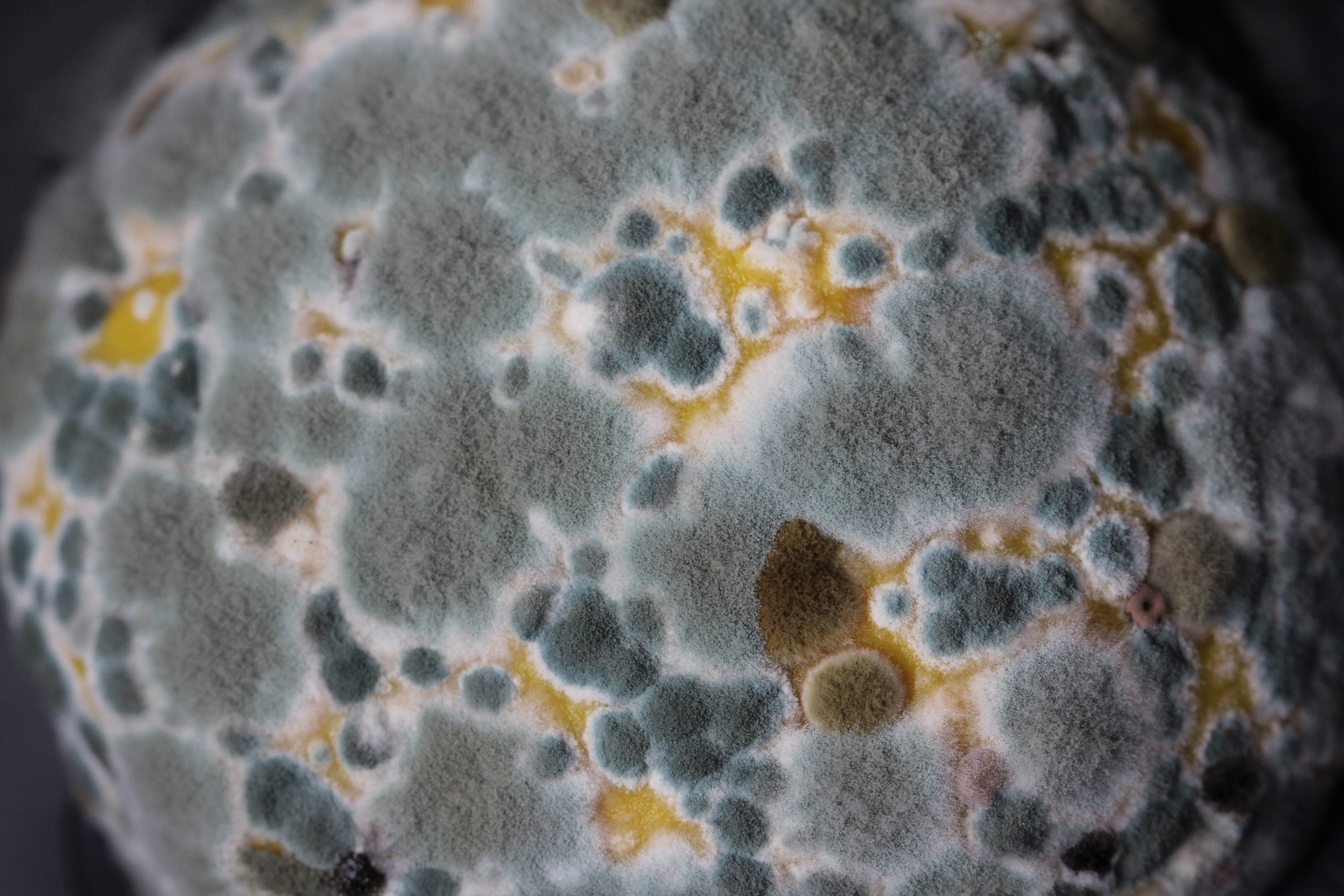
As the weather changes, humidity and temperature fluctuate. With that fluctuation comes problems like Botrytis cinerea, more commonly known as grey mold. This serious fungal disease can impact both outdoor and indoor grows.
Understanding how grey mold works and impacts plants is the first step towards combating and ultimately preventing/overcoming the fungus. Grey mold is one of the most common fungal diseases that can impact a cannabis crop. Do you know what to look for and how to prevent it from destroying your crop?

According to the Royal Horticulture Society, grey mold is “caused by the fungus Botrytis cinerea, is a very common disease, causing a soft decay of plant tissues accompanied by a growth of fuzzy grey-brown mould.”
This mold can spread throughout a cannabis crop, rendering it a loss in some of the more extreme cases. Inhaling cannabis that contains grey mold can cause a variety of problems. According to research from various New York programs and colleges, inhaling mold can cause “innate immune activation, neural, cognitive and emotional dysfunction.”
The 2020 study was conducted using mice that underwent a variety of tests after being exposed to mold spores. Over the 6 week duration of the study, the mice were tested on conditioned fear, microglia, neuron proliferation, and immature neurons. Their results found that mold inhalation led to impairment of the hippocampal memory, increased anxiety-like behavior, and increased pain sensitivity.
According to their results, “mold inhalation causes these diverse neural and behavioral problems by the same mechanism of action as bacterial or viral exposure: innate immune recognition of a pathogen causes immune activation at the site of exposure, ultimately causing innate immune activation in the brain with resultant changes in behavior.”
It is important to know what to look for when diagnosing grey mold. The most common indicator that grey mold is present in your cannabis crop is a grey/white webbing that can be found on the bud. According to the University of Illinois Extension office, “Botrytis [Grey Mold] is sometimes confused with old age and thrip damage.”
According to the Clemson Cooperative Extension Home & Garden Information Center, Grey mold favors cool, damp weather. Growers should be extra cautious during the spring and fall months when these conditions occur frequently. However, depending on the state the grow is located, this could change.
Grey mold spreads from plant to plant via spores that are carried by a host or even the wind. Hosts can include people, animals, bugs, or unsanitized growing equipment. This is why limiting access to grow environments, making sure air/light leaks are sealed in indoor environments, quarantining new plants, and using PPE gear is important to help keep your cannabis crop mold-free.
Checking your cannabis crops frequently, no matter the growing environment, should also be standard practice. This can often be done in conjunction with other tasks, such as watering or defoliating cannabis plants. Employees should be trained to know what to look for so infected plants can be removed, and if caught early enough, treated.
Thankfully, grey mold can be tackled and defeated. Growers can take several steps to combat and prevent grey mold from consuming their harvest. First and foremost is maintaining an ideal growing environment as much as possible. While growers are often faced with dealing with Mother Nature on a regular basis, it is vital to control and maintain the growing environment when and where it can be done.
This also includes controlling the environment your cannabis crop is dried, cured, trimmed, and stored in. Unfortunately, this part of the cultivation process is sometimes overlooked, creating problems during the home stretch. During the last stages of the harvesting and the entirety of the storing process, cannabis can be affected by grey mold similar to when it is growing. If a drying and storage environment is not maintained, it can destroy entire crops, wasting valuable product and hard labor.
The second thing growers can do to combat Grey Mold is to limit the spread of grey mold. This can be done in a couple of different ways. For starters, ensuring your grow equipment is sanitized can help prevent the spread of mold spores from an infected plant to a healthy one. Quarantining new plants coming from an outside source, or even plants showing signs of disease or stress, can also help save your cannabis crop.
Third, defoliating your plants when necessary can also go a long way to helping keep airflow moving and prevent an ideal mold-growing environment from developing. Plant defoliation has many uses during the plant’s life cycle, including plant growth control, increasing yield, and stimulating a hailstorm in order to boost THC production. Helping eliminate an ideal mold growing environment is yet another benefit of this vital process.
These procedures should be a part of every grow’s Standards of Practice. Not only will they help keep a cannabis crop healthy and happy, but also help streamline labor and help keep from wasting supplies. While this is one of the less exciting parts of growing cannabis, it is necessary to make your cannabis operation a success.
With any battle, knowledge is power. Verne Bio is proud to help educate new and experienced growers alike, as well as curious individuals looking to expand their knowledge of the cultivation side of the cannabis industry. Our website is a treasure trove of information, including our blog. When visiting the Verne Bio website, you can expect to find topics covering;
These topics are just a handful of content that can be found directly on the Verne Bio blog. To get information on when new content is posted, find out about our testing equipment, and other information, readers can follow our social channels and subscribing to our newsletter.
Works Cited
Doubrava, Nancy, et al. “Gray Mold (Botrytis Blight) | Home & Garden Information Center.” [email protected], 23 July 2021, https://hgic.clemson.edu/factsheet/gray-mold-botrytis-blight-2/. Accessed 3 May 2023.
Harding, Cheryl F., et al. “Mold inhalation causes innate immune activation, neural, cognitive and emotional dysfunction.” NCBI, 18 November 2019, https://www.ncbi.nlm.nih.gov/pmc/articles/PMC7231651/. Accessed 7 May 2023.
Royal Horticulture Society. “Grey mould.” RHS, 2023, https://www.rhs.org.uk/disease/grey-mould. Accessed 2 May 2023.
Schuster, James. “Gray Mold (Botrytis) | Focus on Plant Problems | U of I Extension.” Illinois Extension, N/A, https://web.extension.illinois.edu/focus/index.cfm?problem=gray-mold-ibotrytisi. Accessed 3 May 2023.

to receive updates and news on our products, events and promos!